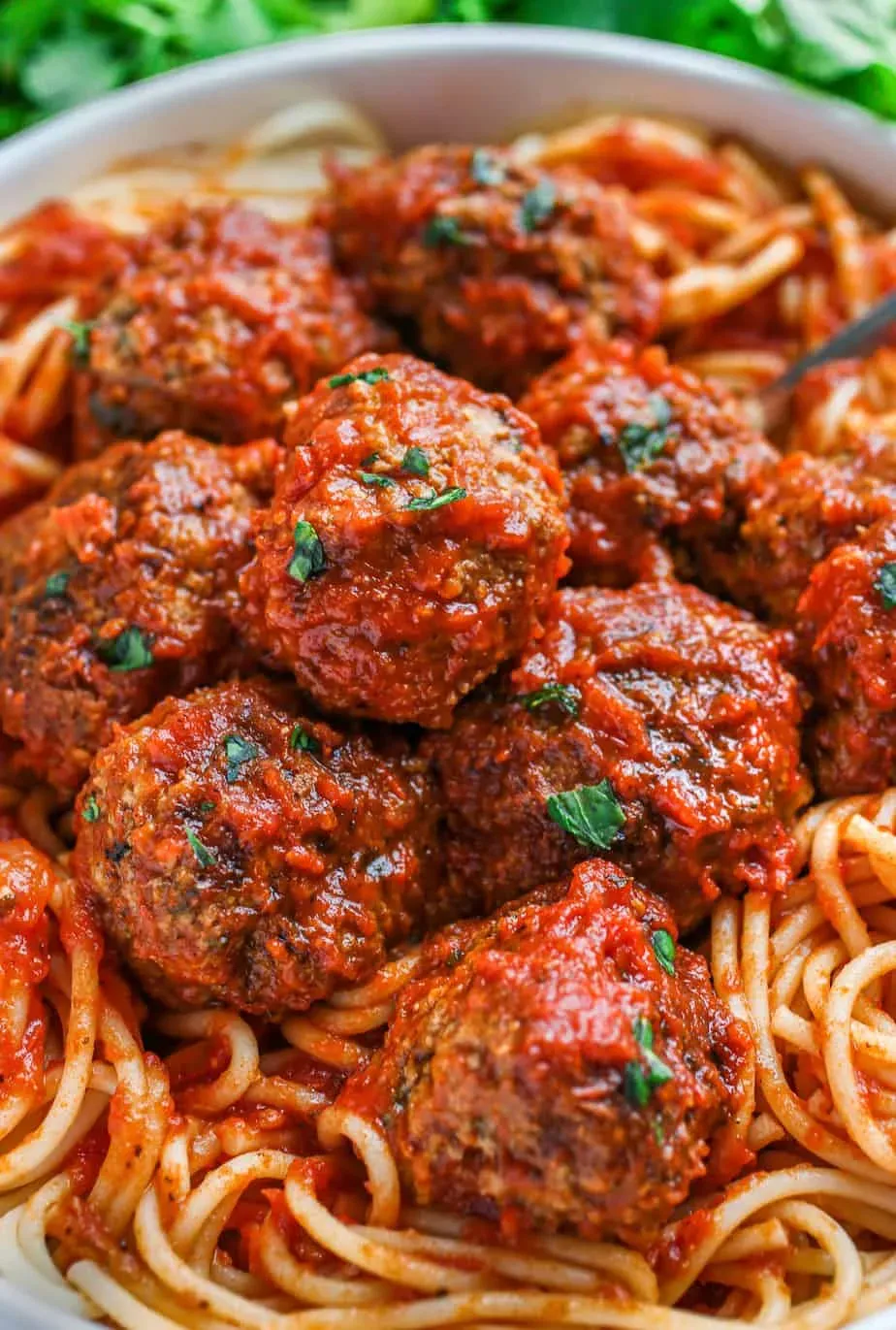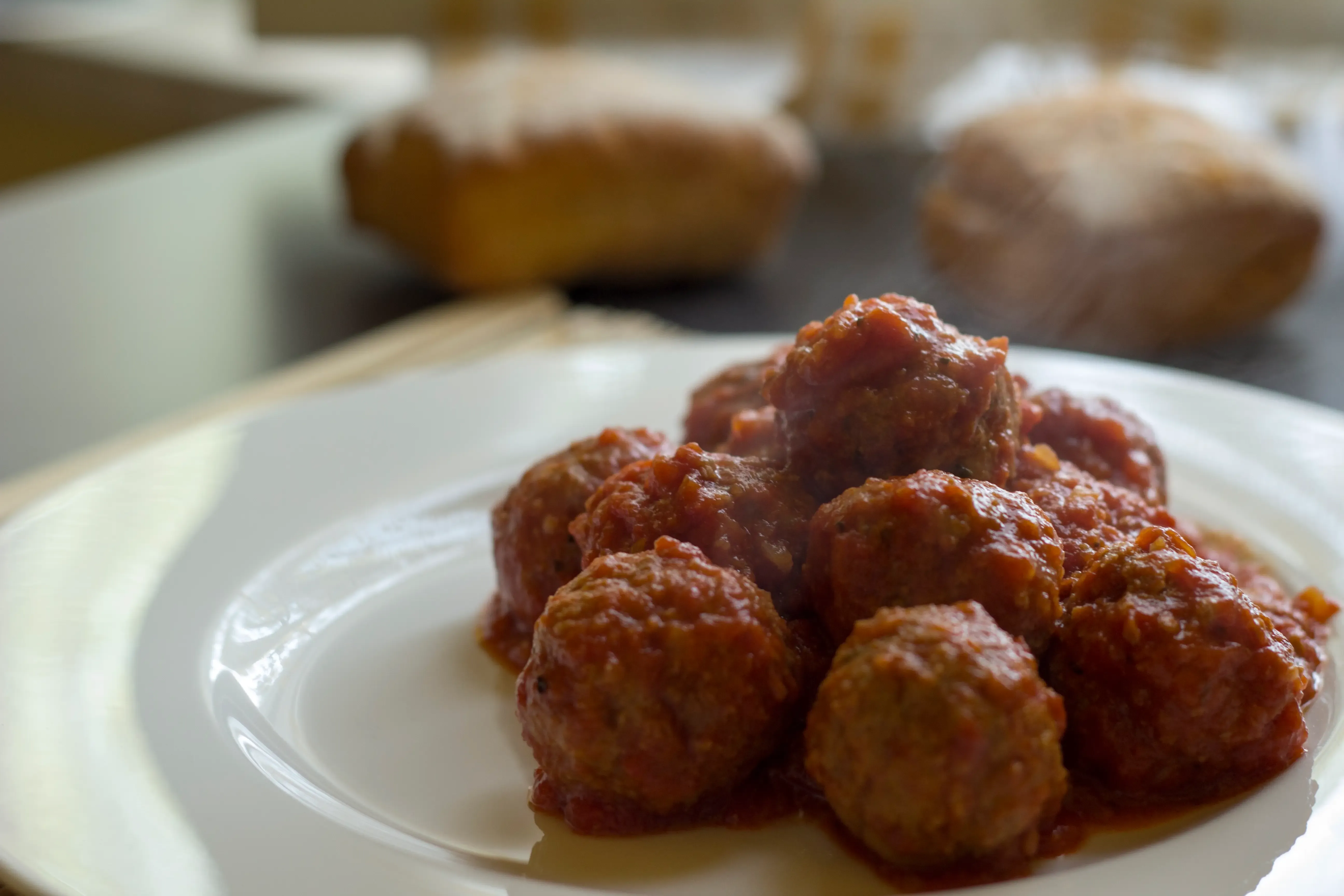Table of Contents
Tired of meatballs that taste like cardboard hockey pucks? Sick of sauce that's just... red? Let's face it, finding that perfect italian meatballs and sauce recipe can feel like chasing a culinary unicorn. You follow the steps, spend the time, and still end up with something underwhelming. It’s enough to make you question your nonna’s legacy.
Crafting the Perfect Italian Meatballs and Sauce Recipe Base

Crafting the Perfect Italian Meatballs and Sauce Recipe Base
Starting Strong: The Foundation
Alright, let's talk foundation. You can't build a solid house on sand, and you definitely can't make a killer italian meatballs and sauce recipe without starting with the right base. This isn't just about grabbing any old can of crushed tomatoes and calling it a day. We're talking about the initial aromatics, the fat you choose, and getting that first layer of flavor locked in before anything else hits the pot. Think about the smell that hits you when you walk into a good Italian kitchen – it’s usually onions, garlic, maybe some celery or carrot, sizzling gently. That’s the starting point, the non-negotiable first step in crafting the perfect italian meatballs and sauce recipe base.
Secrets to Juicy, Flavorful Italian Meatballs Every Time

Secrets to Juicy, Flavorful Italian Meatballs Every Time
Choosing Your Meat Mix and Binder Wisely
so you've got your sauce base simmering. Now for the main event: the meatballs. This is where many people go wrong. They grab a pound of lean ground beef and wonder why their meatballs are dry and dense. The secret starts with the meat blend. You need fat for flavor and moisture. A classic mix is equal parts beef, pork, and sometimes veal. Beef gives it structure, pork adds juiciness, and veal (if you use it) brings tenderness. Don't be afraid of a little fat; that's where the magic happens.
Next up: the binder. This is usually breadcrumbs, eggs, and sometimes milk or water. Stale bread soaked in milk and squeezed out? That's a game-changer for tenderness compared to dry breadcrumbs straight from the box. It creates a softer texture. Think of it like this: the binder holds everything together, but it also keeps the meatballs from turning into little rocks. Get this step right, and you're halfway to a killer italian meatballs and sauce recipe.
Seasoning and Mixing Without Manhandling
Seasoning is more than just salt and pepper. We're talking finely minced garlic, fresh parsley, maybe a pinch of red pepper flakes for a little kick. Some folks swear by a touch of grated Parmesan right in the mix. The key is to distribute the seasoning evenly without overworking the meat. Overmixing is the enemy of a tender meatball. When you mush and squeeze the meat too much, you develop the proteins, making them tough.
Imagine you're gently folding ingredients together, not kneading dough. Use your hands; you can feel when everything is just combined. It should still feel a bit loose, not like a solid paste. Shape them gently, don't pack them tight. Aim for roughly the same size so they cook evenly. Nobody wants a mix of perfectly cooked and raw or burnt meatballs in their italian meatballs and sauce recipe.
- Use a mix of meats (beef, pork, veal).
- Soak breadcrumbs in milk for tenderness.
- Season generously with garlic, parsley, salt, and pepper.
- Add grated Parmesan to the mix.
- Mix gently with your hands; avoid overworking.
- Shape loosely and uniformly.
Cooking Them Before They Hit the Sauce
To get that beautiful browned exterior and lock in flavor, you need to cook the meatballs partially before they go into the simmering sauce. You have options here. Pan-frying gives them a nice crust and renders off some fat. Baking on a wire rack is less messy and still gets them browned. Some purists even drop them raw into the sauce, but you lose that initial flavor development and can end up with greasier sauce.
Don't overcrowd the pan or baking sheet. Give them space so they brown instead of steam. You're not cooking them all the way through at this stage, just getting some color on the outside. They'll finish cooking in the sauce, absorbing all those lovely flavors. This two-step process is crucial for achieving those juicy, flavorful meatballs that are the heart of a great italian meatballs and sauce recipe.
Simmering Your Way to the Best Italian Sauce

Simmering Your Way to the Best Italian Sauce
The Magic of Low and Slow: Why Simmering Matters
you've got your base going, smelling fantastic, and your meatballs are prepped and ready. Now comes the part that separates a good sauce from a truly great one: the simmer. This isn't a race. Dumping everything in and boiling it for ten minutes just won't cut it for a proper italian meatballs and sauce recipe. Simmering is where the flavors meld, deepen, and become something greater than the sum of their parts. It's gentle heat, little bubbles occasionally breaking the surface, coaxing the sweetness out of the tomatoes and letting the herbs and aromatics infuse the entire pot.
Think of it like slow-roasting. You wouldn't blast a pork shoulder at 500 degrees and expect it to be tender and juicy, right? Same principle here. This low, slow heat breaks down the tomatoes, thickens the sauce naturally, and allows those incredible meatball flavors to seep in once you add them. It’s patience in a pot, and it’s absolutely essential for that rich, comforting italian meatballs and sauce recipe you're aiming for.
How Long to Simmer and What to Look For
So, how long *do* you simmer? Minimum, I'd say an hour, maybe two. But honestly, the longer, the better, within reason. Some families let their sauce go for three, four, even more hours. You'll know it's ready when the sauce has thickened significantly, the color is a deep, brick red, and the flavor is complex, not sharp or acidic. Taste it as it simmers. Does it need a pinch more salt? A tiny bit of sugar to balance acidity? This is your chance to adjust.
Adding the meatballs comes in the last phase of simmering. Pop them in gently once your sauce has developed for a good while. They’ll finish cooking in the sauce, releasing more flavor and becoming incredibly tender as they absorb the liquid. Keep the heat low. You don't want the meatballs bouncing around like bumper cars; just a gentle, lazy simmer is perfect for your italian meatballs and sauce recipe.
- Use a heavy-bottomed pot for even heat.
- Keep the heat low; aim for gentle bubbles.
- Simmer for at least 1-2 hours, longer is often better.
- Taste and adjust seasoning throughout.
- Add meatballs in the last 30-60 minutes of simmering.
- The sauce should thicken and deepen in color.
Serving Up Your Italian Meatballs and Sauce Recipe: Tips and Tricks

Serving Up Your Italian Meatballs and Sauce Recipe: Tips and Tricks
Serving Up Your Italian Meatballs and Sauce Recipe: Tips and Tricks
So you've put in the work: the base is rich, the meatballs are plump and juicy, and the sauce has been doing its low-and-slow magic. Now comes the moment of truth – getting it from the pot to the plate. Don't just slop it over some pasta and call it a day. The presentation matters, and how you serve it can elevate your incredible italian meatballs and sauce recipe from "good dinner" to "holy moley, you made this?!" Think about the pasta choice; something sturdy like spaghetti, fettuccine, or even a short pasta like rigatoni or penne works best to cradle those glorious meatballs and cling onto that beautiful sauce. A shower of freshly grated Pecorino Romano or Parmesan is non-negotiable, not the pre-shredded sawdust. A sprinkle of fresh basil or parsley adds a pop of color and freshness that cuts through the richness.
Your Italian Meatball Success Story
So there you have it. No magic wands, just solid technique and decent ingredients. You put in the time, followed the steps, and now you're staring down a plate of seriously good italian meatballs and sauce. They're not hockey pucks, the sauce isn't bland, and frankly, you earned that second helping. This italian meatballs and sauce recipe isn't about perfection on the first try, but about understanding the bits that actually matter. Now go eat before someone else does.